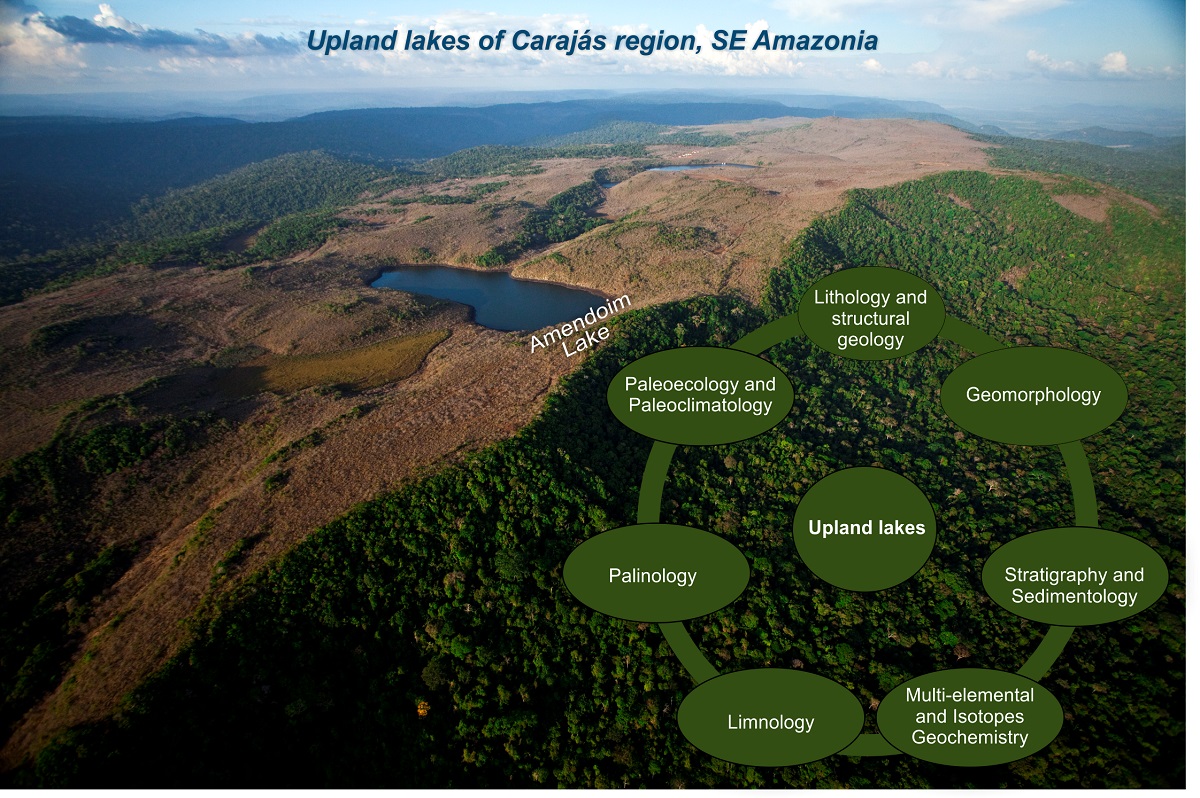Upland lakes (ULs) of the Carajás, southeastern Amazonia, have been intensively studied to their evolution during the Quaternary, as well as the development of the associated biota. In this review, several classical and modern approaches from structural geology to the pollen rain and sedimentary data which cover an area of around 41,300 km2 were compiled. Multi-elemental geochemistry indicates that the detrital sediments derived from weathered crusts and soils, while the sedimentary organic matter represent autochthonous (siliceous sponge spicules, algae, macrophytes) and allochthonous (C3 plants and freshwater DOC) sources. Modern pollen rain suggests that even small lakes and canga areas can reflect forest signal, which depends on the topographic control and prevailing wind direction on pollen deposition. Integrated data of the sedimentary cores indicate that the active lakes never dried up during the last 50 ka cal BP. However, subaerial exposure occurs on filled lakes such as ST02 Lake during the LGM, LB3 and R2 lakes at the mid-Holocene due to drier paleoclimate conditions. Considering the organic proxies, only LB3 Lake presents expansion of C4 canga (montane savanna) plants since ULs of the Serra da Bocaína does not present siderites. Siderite formation on ULs deposits also points to drier paleoenviromental conditions, interrupting predominantly wet conditions. However, there is no evidence for widespread expansion of savanna into Southeastern Amazonia during the late Pleistocene and Holocene.

